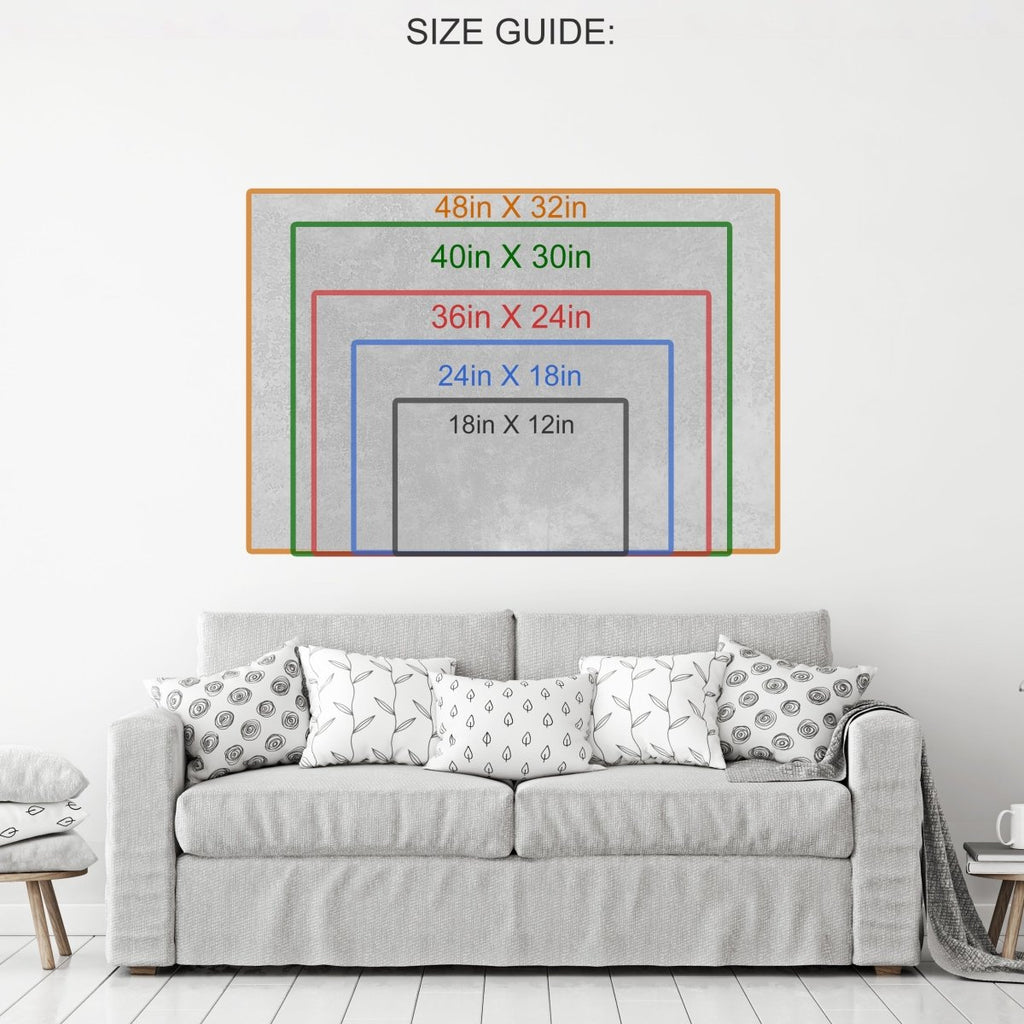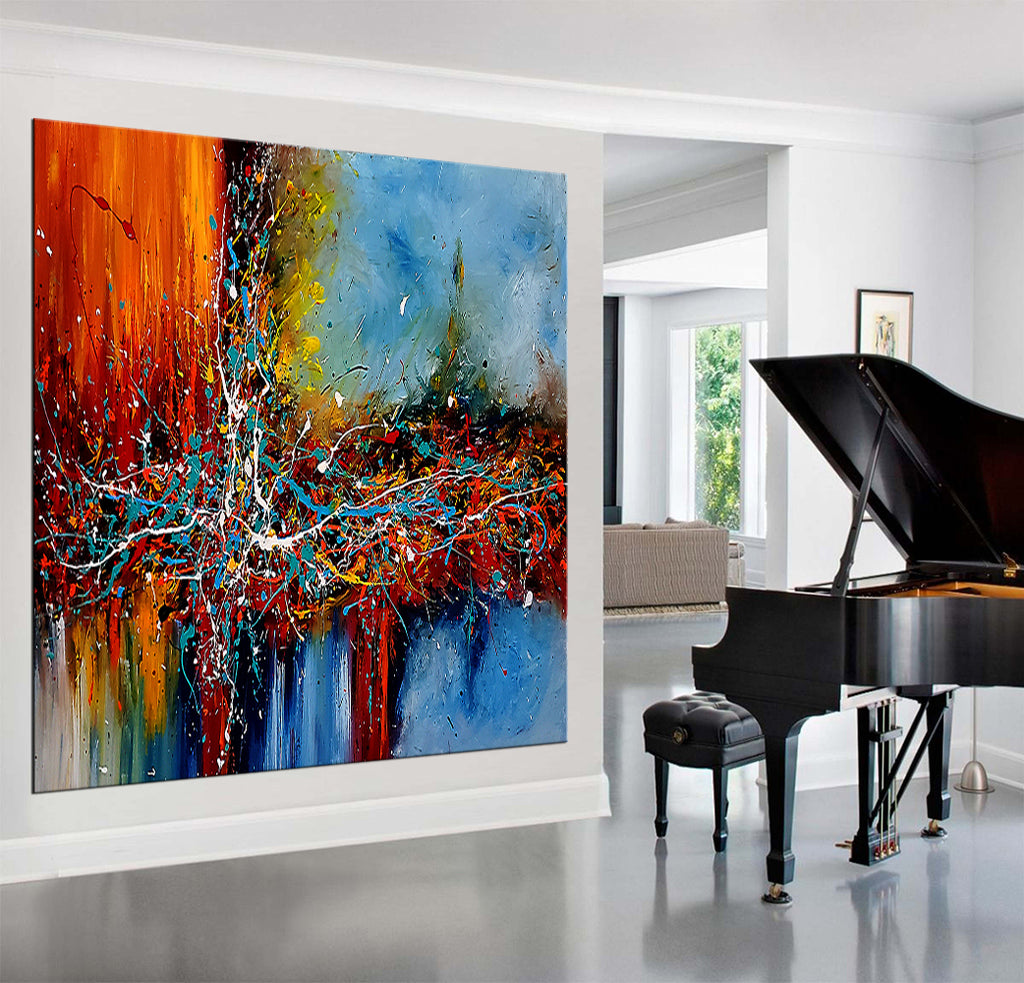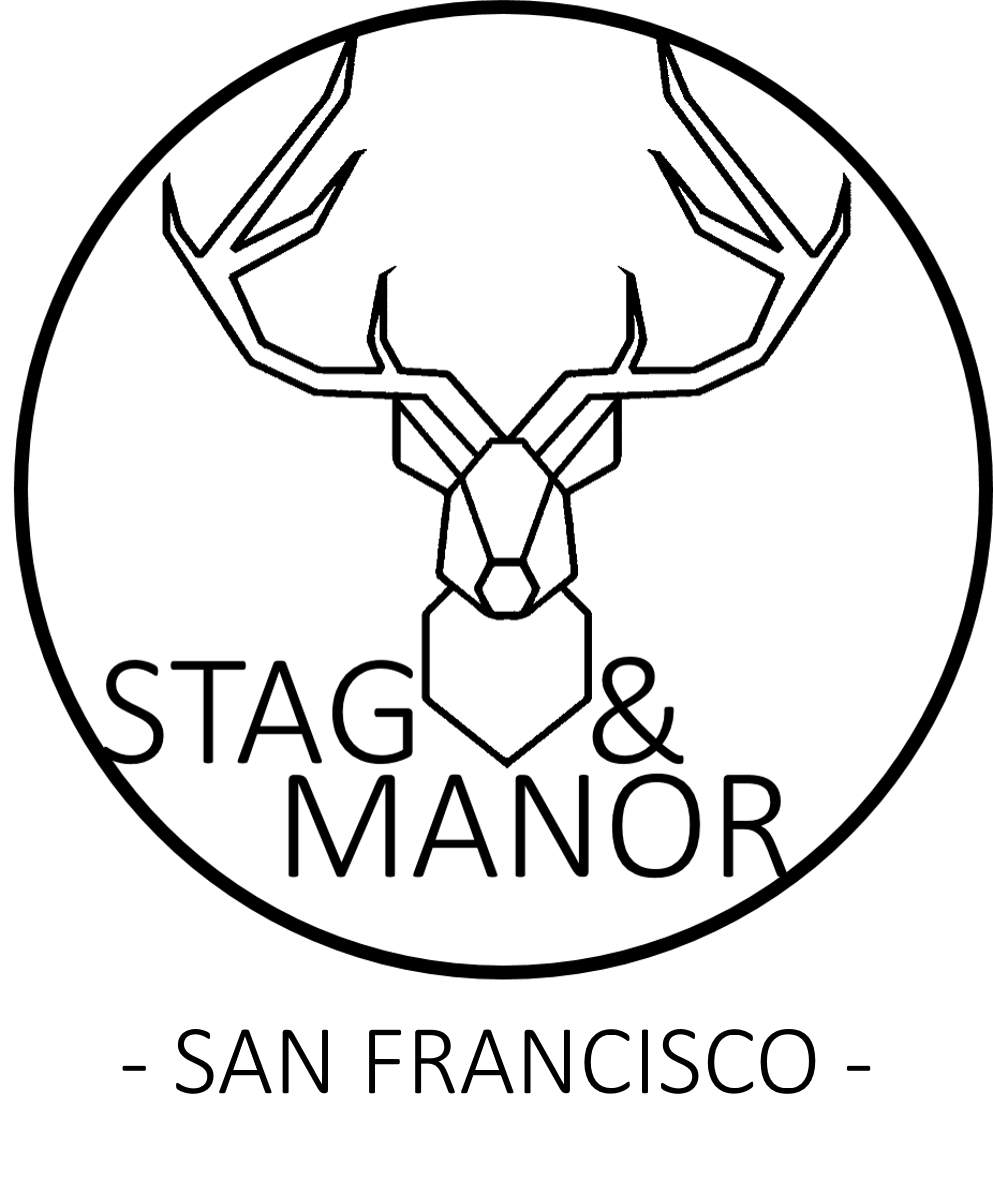How to Choose the Right Size Wall Art

(Image Source: Etsy.com)
When selecting canvas art, one of the first considerations is whether you’re filling in an empty wall or adding to existing artwork. For empty walls where you want to add large canvas wall art, the print should take up about 60% to 75% of the space. You can also group together several prints to create a gallery wall — a handy trick when you have a large, blank wall that needs some color or you’re trying to fill in empty spaces around a television, light fixtures, or floating shelves.
1. Determine The Right Size

When selecting the size of your canvas art, consider where you’ll be hanging it. Are you looking for living room wall art above the fireplace or over the couch? Dining room wall art above the dining table? Kitchen wall art above a countertop? Go too small, and your piece will feel underwhelming; go wider than the width of the furniture below the print, and it will feel awkward. Here are a few rules of thumb to follow:
● Make sure the canvas art will be between 60% to 75% as wide as the furniture underneath it. This will ensure a balanced look between your art and other décor.
● The center of the piece or pieces should fall at 58 inches high — an art gallery standard. This will give the artwork an optimal viewing height.
● Ensure the bottom of the piece will hang 6 to 12 inches above furniture. Less than 6 inches can cause your space to feel cramped as your furniture competes with the art.
2. The Wall

Well, of course, you will consider the wall, and you will probably measure it once or twice, but then what? You need to think about two things here - of course there is the overall dimensions of the wall, but then you also need to think about the orientation. Tall, narrow walls will work best with art of a similar shape, created in a portrait, or vertical orientation, while horizontal wall spaces (often found over sofas, in a hallway) work best with landscape-oriented artwork. In looking at the overall wall space dimensions your artwork should take up two-thirds to three-fourths of the wall. Like I stated above... go big!
3. Over Furniture or Mantels

Many of my clients who ask for my help in recommendations for art for their home send me photos of the wall where they intend to hang the piece. This is great! Along with the measurements they provide me, I can quickly tell them just the right size canvas for hanging. However, I sometimes receive photos sent from clients of my work hung in their rooms, and I wish they would have consulted me on size selection prior to purchasing,- because the beautiful 30" painting they just invested in looks lost over their 8 foot couch. Here is the rule of thumb when hanging over furniture like a sofa, table, fireplace mantle, etc.: The art should be three-fourths the width of the furniture and hung 6"-12" above the top. It is that easy! Of course it doesn't need to be exact, sometimes an off-center piece brings wonderful visual interest to a wall, but when in doubt, fall back on that rule!
4. Gallery Walls

Gallery walls are a fun, eye-catching way to fill a large space when you are drawn to more than one piece by the same artist, when you find several prints or paintings within the same color palette which you'd like to group together, or to display amazing photography in frames. You can group together wall art which is all the same size, or create real visual interest by grouping together art of varying sizes in one of many gallery layouts that you can find online. Whichever layout you decide on for your gallery wall, lay the artwork out on the floor first, measure the total groupings height and width and make sure it follows the same guidelines above for filling up your space. There are many online websites which can provide you with free downloadable gallery wall templates to guide you in your layouts.
5. Just how tall do you think you are?

A close second in sizing mistakes to art being too small for the wall, is art being hung much too high! You need to think about this when determining the size of art to choose, any piece of art should be hung with the center point at eye-level. Not with the bottom edge 6 feet off of the floor on an otherwise blank wall. (If you are very short, or very tall, use the average 5'6" person as a guideline.) Again, don't be afraid to fill up that space!
Art, especially original art, is an investment that can last a lifetime, it can make or break a room and is essential to a finished look. Now comes the fun part... explore artwork, and have a blast selecting a gorgeous piece of art that is the best fit for your home!

